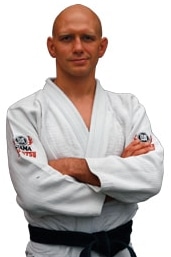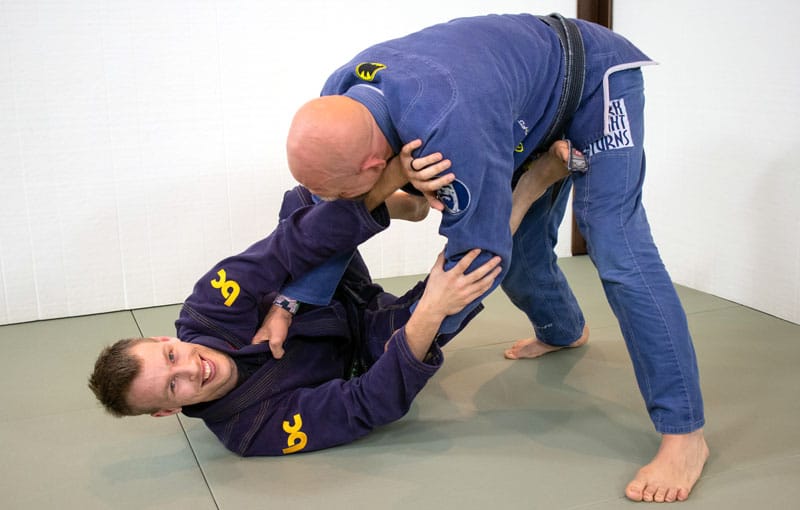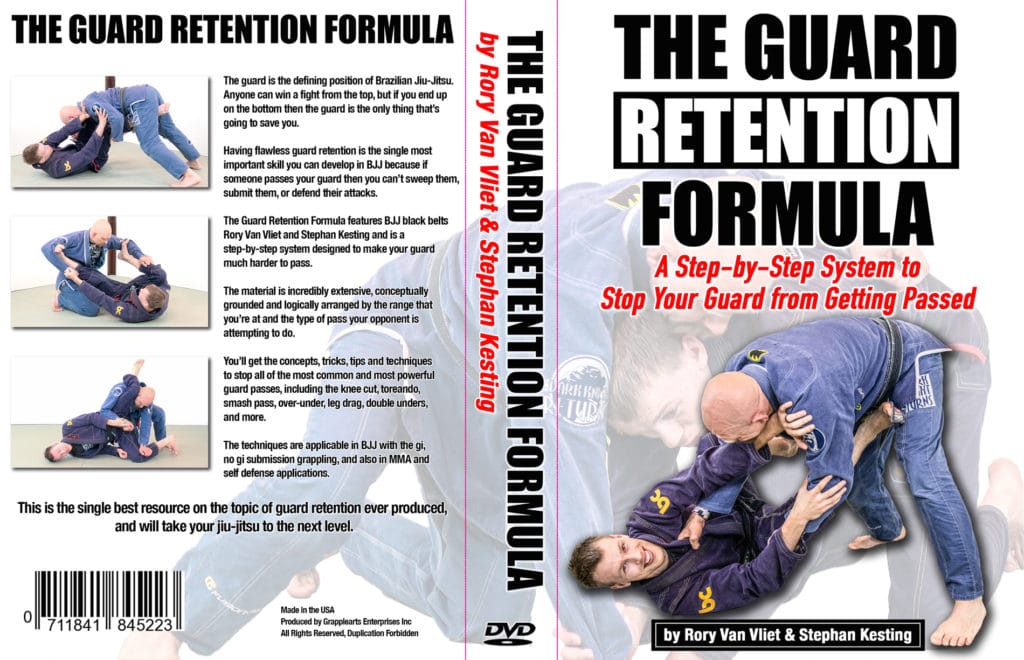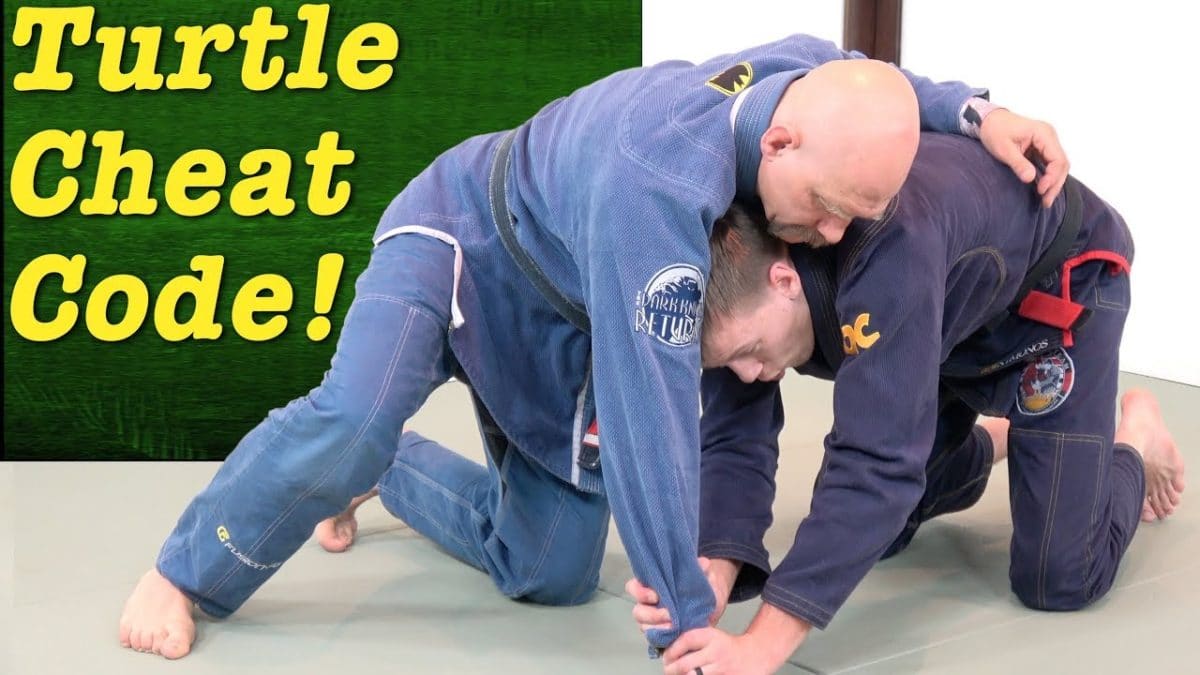
The turtle is a terrible position! Being on all fours is an invitation for your opponent to apply the clock choke, take your back and choke you out, or attack you with other submissions.
And if you’re talking about an MMA or self defense situation it’s even worse. Now your opponent can elbow, knee and hammerfist you into oblivion without even having to take your back!
Let’s look at how to safely escape from the turtle position when your opponent is above you in the way that exposes you as little as possible…
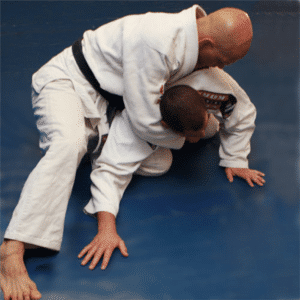
Unless you’re one of the very few BJJ practitioners like Eduardo Telles who specialises in the turtle you should only use this position in dire emergencies.
That being said, the BJJ positional hierarchy (an idea fully developed in my downloadable Roadmap for BJJ book) tells us that being in the turtle under your opponent is still better than being trapped in any other pinning position.
Table of Contents
The Turtle in the BJJ Positional Hierarchy

This hierarchy means that if your opponent is about to pass your guard and get to side mount or knee mount then you might want to get to turtle first. It’s not a great position but it’s still the lesser of two evils.
In the turtle you have more mobility than if you’e pinned on your back, so instead of staying there you want to MOVE! Use a turtle escape technique and get the heck out of Dodge.
So when you get to turtle you do NOT want to stop and congratulate yourself. It’s NOT a place you want to hang out in!!
There are numerous techniques to escape from the turtle position, including turning in, rolling out, sitting down, half Granby’ing, and using the Robson hook.
But all of these different techniques are made much easier if you first use what my friend Rory Van Vliet (and main author of The Guard Retention Formula) calls ‘The Turtle Cheat Code’…
The Turtle Cheat Code

The turtle cheat code is a gripping and positioning tactic you can use on the bottom which makes it MUCH harder for your opponent to submit you or take your back.
To use the turtle cheat code to set up your escape you’re going to do 3 main things…
- Control your opponent’s top arm (the one closest to your near side of your face) with both hands at the wrist using a baseball bat grip
- Put the top of your head against the inside of your opponent’s armpit
- Using these two points of contact create and maintain some tension in your opponent’s arm
Once you’ve got his arm neutralised like this it’s hard for him to extract it or even to effectively move around your body.
But as I said before, you do not want to stay here. Instead immediately start moving to escape, typically either by getting back to the guard or by standing up.
Here, briefly, are three turtle escape options you might want to use from the cheat code position…
1, The Sit Down Escape
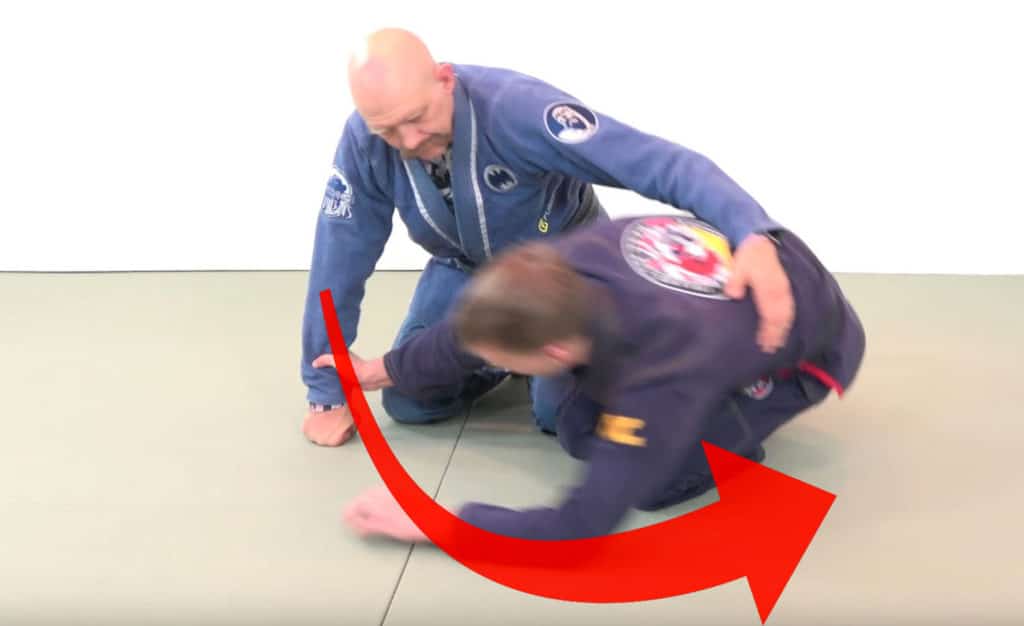
The sit down escape involves you sitting down to your butt and then putting your opponent back into your guard.
This seems like a very simple, but many people do it wrong. The main mistake is that they simply sit down beside their opponent, instead of moving their head away from their opponent first.
As you can see in the picture above Rory maintains control of my wrist for as long as he can while moving his head and upper body away to 90 degrees of his initial position.
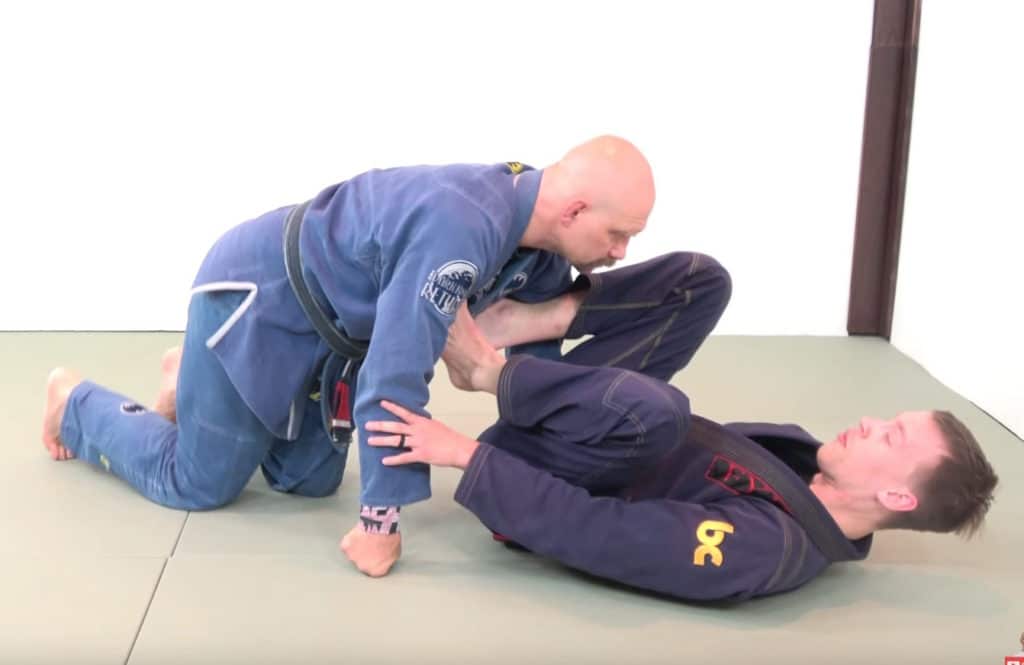
Once you’ve put some distance between you and your opponent in the sit down escape then the next step is fairly easy…
Continue retreating away and bring your knees up towards your chest to re-establish guard. Hey presto, you’re out!
2, The Half Granby Escape
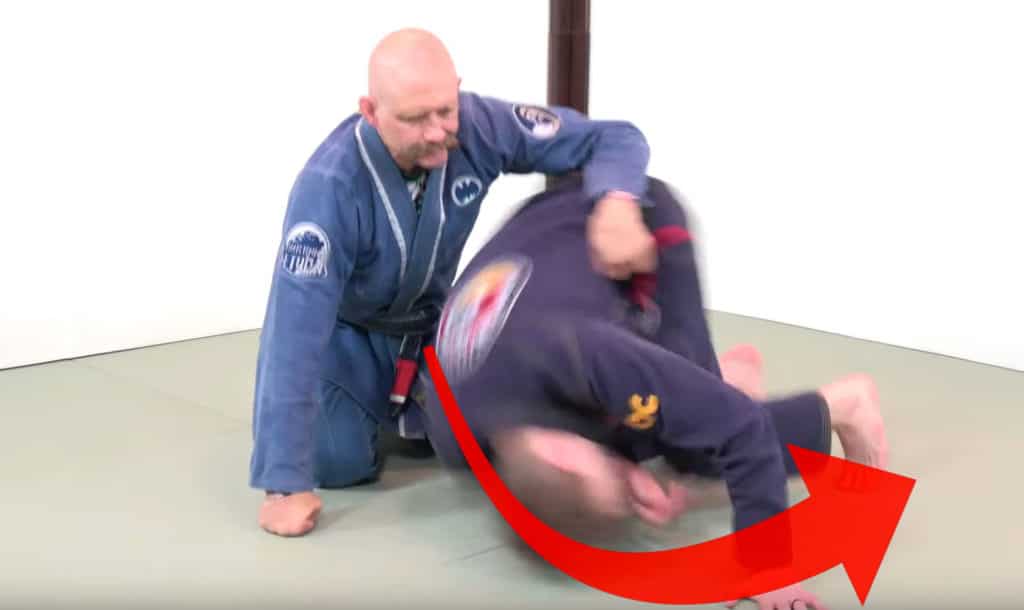
Sometimes you’ll sense that your opponent’s weight distribution and energy just isn’t right for you to do the sit down escape. In that case you might want to give the Half Granby technique a try.
It’s hard to describe this technique in words – you’re best off watching the video at the top this page from about the 2:20 mark to see it in action – but essentially you pike up, tuck your head away from your opponent, drive your hips towards your opponent, and then roll from one shoulder to the other.
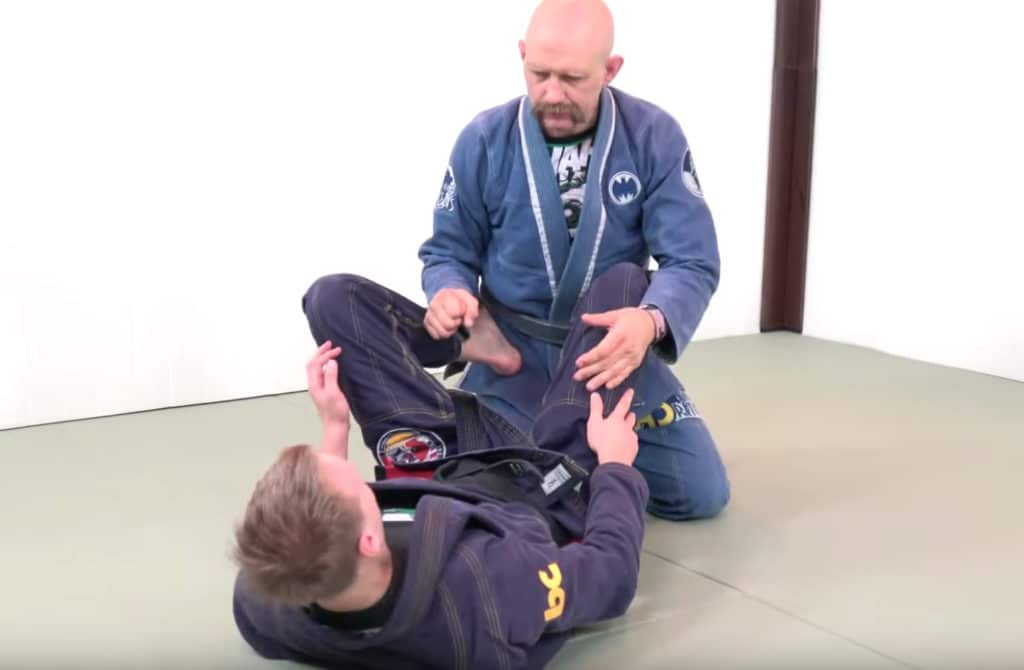
At the end of the half Granby you’ll end up at 90 degrees from where you began with your opponent now in your guard. You’ve escaped a bad position and looked totally badass doing it.
This movement isn’t nearly as hard to do as you might think. In fact I would consider it an essential BJJ movement for students beginning to approach blue belt level and above.
If you want a more detailed breakdown of the half Granby check out the Half Granby Roll video in this article about guard retention.
3, The Stand Up Escape
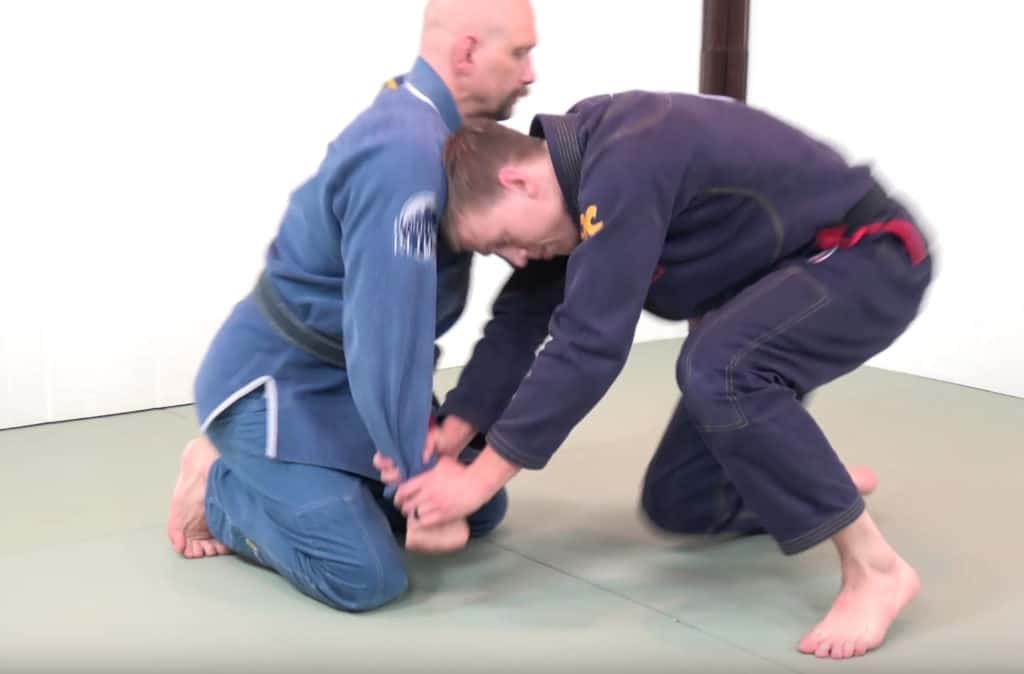
Although you can get back to guard from turtle using the cheat code position you can also get back to your feet.
If you can shift your opponent’s weight off you by driving with your head then you can start standing up while still controlling his wrist.
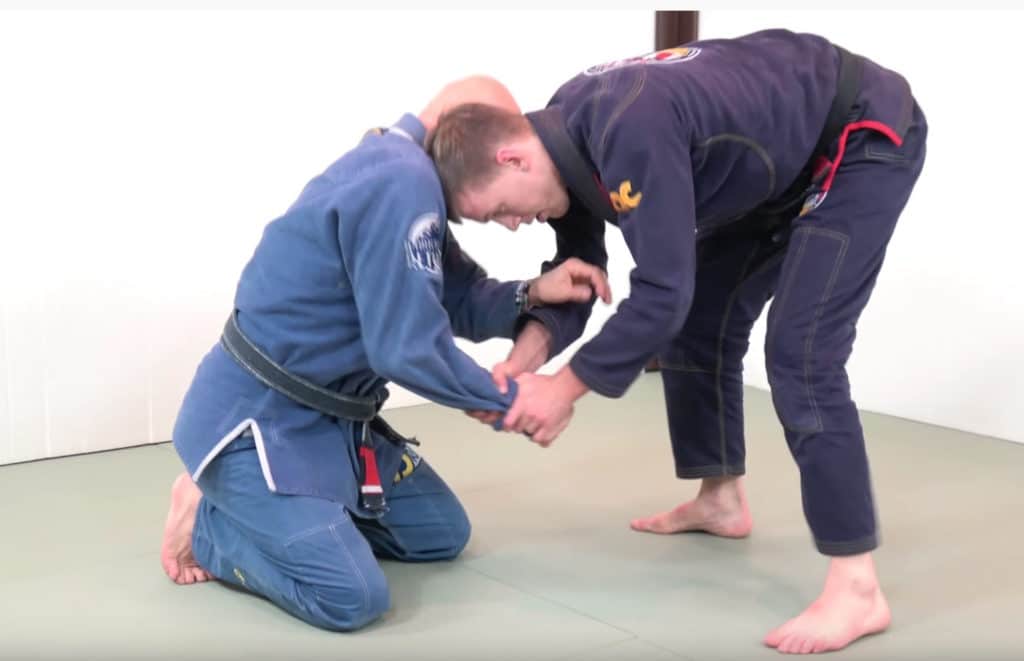
Keep on controlling his wrist when you get back up to both feet so that he can’t simply drive in and take you down with a low double leg or single leg takedown.
Getting back to your feet using this turtle escape isn’t complicated; mostly it just requires you to not get completely focussed on pulling guard and remember that standing up is an option too!
More Guard Retention with Rory Van Vliet and Stephan Kesting
The guard is the defining position of Brazilian Jiu-Jitsu. Anyone can win a fight from the top position but on the bottom only the guard can save you.
If someone passes your guard then you can’t sweep them. If someone passes your guard then you can’t submit them. And if someone passes your guard then you can’t defend against strikes.
That’s why guard retention is the single most important skill you can develop in BJJ.
To help you make your guard much harder to pass check out The Guard Retention Formula that I filmed with BJJ black belt Rory Van Vliet.
In this conceptually grounded instructional you’ll get step-by-step methods to stop all of the most common and most powerful guard passes, including the knee cut, toreando, smash pass, over-under, leg drag, double unders, and more.
It’s incredibly extensive and will have gi, no gi, MMA and self defense applications.
As we were filming it I kept on thinking that if I had had this material as a white belt I would have had an absolutely impassible guard. It would have taken years off of my learning curve.
I’ve been a black belt now for almost 14 years and I still learned a ton from Rory’s teachings. I’ve already used some of the techniques and approaches in my own sparring and it has really helped.
So I can confidently say that this instructional will help everyone from white belt to black belt.
This is the best resource on the topic of guard retention that I have ever seen.
Click here for more information about The Guard Retention Formula!

